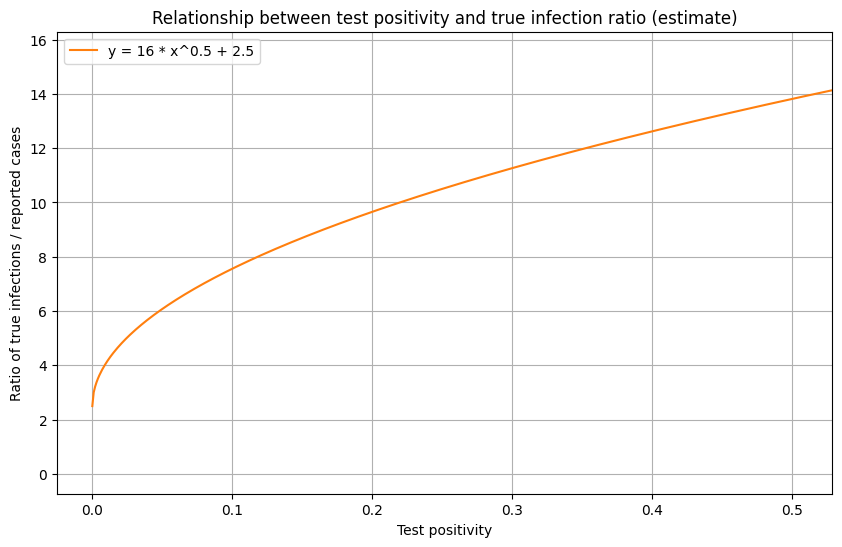HotardAg07 said:
In most cases, test positivity rate is a good indicator for the ratio of cases that you are catching. Empirically it is observable and additionally it makes sense, given that the higher the outbreak, the more tests are rationed to the sickest people, etc. Ideally, you'd be able to test people who not only have symptoms but contact with confirmed positives, and that would lead to a very low positivity rate. covid-19projections uses this relationship:

Therefore, if recorded cases were flat, but test postivitity was dropping, that means that you could infer that the actual number of cases was dropping. This is a common scenario when the number of daily tests being reported is increasing steadily. I think that is why Texas and other states tried to use test positivity as a key metric in evaluating the virus, because they did not want to penalize themselves for increased reported cases in an increased testing environment.
The problem in addition to reporting as Keegan has outlined is also that less people are going for tests. The Houston Health twitter has been begging people to go get tested at their free drive through sites. Whereas a month ago you had to have an appointment, appointments were extremely hard to get at the free drive through testing sites, and there were reports of people waiting hours for their tests, now you can drive up with no appointment and have a very short wait (<30 minutes).
I think a big problem is just the lack of confidence in the testing program in general. You hear about people struggling so much to get a free test and how long it took to get the results, you decide it's not worth the trouble. From a public health stand point, you'd like more people getting tested and tracing programs to branch off of that to mitigate further spread, but it's just not working that way in Texas at the moment, it seems.
Ideally public policy makers would be looking at all the indicators (cases, positive test rate, hospitalizations, and deaths) and inferring the situation based on that. I think a good metric to use for estimating the severity of the virus would be the estimated % of people who have the active virus. According to the covid-19projections model, we were below 0.5% currently infected in Harris County, which would be 1 in 200 people. We peaked at 3% and now we are at about 2.5%. That would suggest 1 in 40 people in Harris County have coronavirus right now.

Thanks, agreed less people are going for tests based on the numerous first hand accounts. I was assuming (hoping?) that was due to less people feeling symptoms, or fewer people around those displaying symptoms, so less felt the desire to get tested. If people lost faith in the testing process, that is unfortunate. I can state my wife has had two swab tests and an antibody tests, none required a long wait to conduct the test (had appointment times) and the results came between 24 hours and 4 days. Not bad - I'd encourage anyone who thinks they have the symptoms, or were exposed, to get tested.
You can't force tests on people unless maybe they are in the hospital, so a county, state, or country can't control the number of total tests administered. Well, some countries may be able to force tests but not as much here.It's possible there is both a drop in people wanting tests and also a sloppy handling of reported/deleted tests, but I do believe tests have decreased due to a drop in actively sick people.




